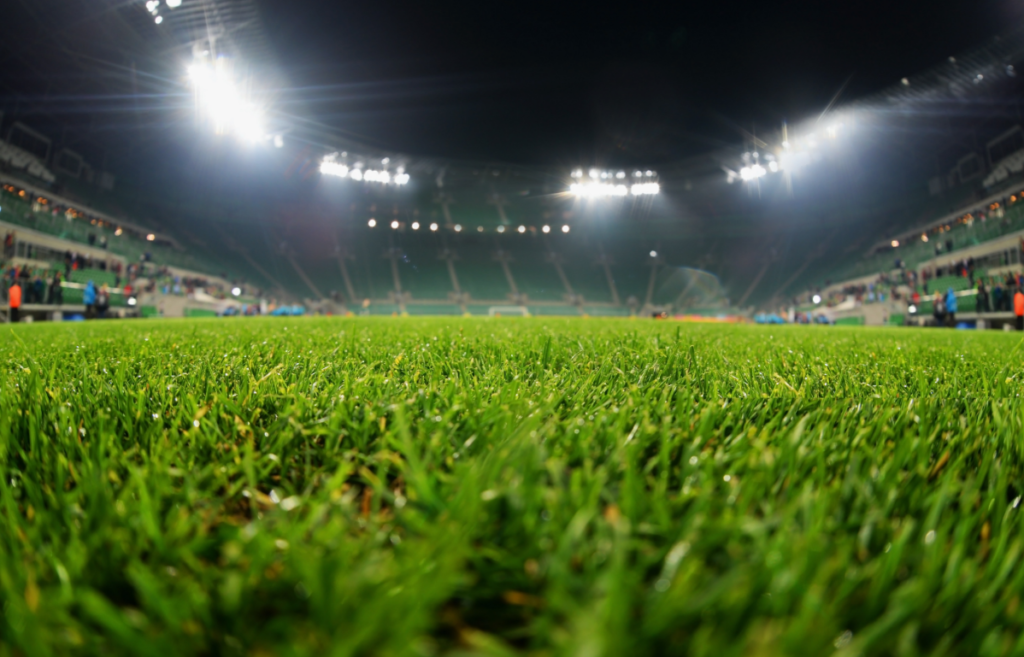A soccer field is typically 100-130 yards long. The exact length can vary based on regulations. Soccer fields are known for their specific dimensions, with the length ranging from 100 to 130 yards, making them spacious yet contained areas for the game to unfold. Understanding the length of a soccer field is crucial for players, coaches, and fans alike to appreciate the dynamics of the game.
Whether it’s a professional match or a casual game at a local field, the dimensions of the soccer field play a fundamental role in shaping the flow and strategy of the game. Let’s explore the significance of the length of a soccer field and how it impacts the overall experience of this beloved sport.
How Long is Soccer Field

History of Soccer Field Dimensions
Soccer fields have evolved in size over the years, with the dimensions being influenced by various factors such as the style of play, available space, and player safety. Understanding the history of soccer field dimensions provides insight into how the game has developed and adapted to different environments.
Evolution of Field Sizes- How Long is Soccer Field
The length of a soccer field in meters has undergone significant changes throughout history. From the early days of soccer to the modern era, the dimensions have varied based on regional preferences and playing styles. Initially, soccer fields were not standardized, leading to varying sizes across different regions. However, as the sport gained popularity, efforts were made to establish consistent dimensions to ensure fairness and uniformity in gameplay.
Impact of Field Dimensions on Gameplay- How Long is Soccer Field
How long is soccer field in feet has a direct impact on the gameplay. The size of the field affects player positioning, movement, and overall strategy. A larger field encourages a more expansive style of play, with an emphasis on ball movement and spacing. Conversely, a smaller field promotes a tighter, more physical style of play, with players being in closer proximity to each other.
Standard Soccer Field Measurements
Fifa Regulations
The FIFA regulations for soccer field measurements dictate the standard dimensions of a soccer field. According to FIFA, the length of the soccer field should be between 100 meters (110 yards) and 110 meters (120 yards), while the width should be between 64 meters (70 yards) and 75 meters (80 yards).
Variations In Field Sizes
Despite FIFA’s regulations, there are variations in field sizes that are permissible in certain circumstances. For example, FIFA allows for a smaller field size for international matches if both teams agree. Additionally, some leagues and organizations may have their specific field size requirements within the range set by FIFA.
Key Components of a Soccer Field
When it comes to the game of soccer, the field is an essential element that plays a crucial role in the game’s dynamics. Understanding the key components of a soccer field, including the goalposts and the penalty box, is essential for players and fans alike. Let’s delve into the specifics of these components.
Goal Posts
The goalposts are a fundamental aspect of the soccer field, serving as the target for players to score goals. According to FIFA soccer field dimensions, the standard distance between the goalposts is 8 feet.
Penalty Box
The penalty box, also known as the 18-yard box, is a critical area on the soccer field. It is a rectangular area extending 18 yards into the field from both goal lines and 44 yards wide. This box is where fouls committed by the defending team result in penalty kicks for the attacking team.
Factors Influencing Field Length
Soccer is a popular game that is played on fields of varying sizes, depending on different factors. The size of a soccer field can vary from one location to another, depending on factors such as the level of play, environmental constraints, and the layout of the field.
Professional Vs Amateur Fields
Professional soccer fields are typically larger than amateur or school fields. According to FIFA regulations, the length of a professional soccer field should be between 100-130 yards (90-120 meters), while the width should be between 50-100 yards (45-90 meters). This is to accommodate the higher level of play and the need for more space for players to move and execute their skills.

Environmental Constraints
The size of a soccer field can also be influenced by environmental constraints. For instance, fields that are located in areas where there are physical barriers, such as trees or buildings, may have to be smaller. This is to ensure that players do not collide with such barriers when playing..
Field Layout
The layout of a soccer field can also influence its size. For instance, if the field has a running track around it, the size of the field may be smaller to accommodate the track. Similarly, if the field is shared with other sports, such as football or rugby, the size of the field may be adjusted to accommodate the needs of those sports.
The Role of Field Size In Tactics
The size of a soccer field plays a crucial role in determining tactical strategies during a match. Understanding the length and width of the field helps teams adapt their gameplay for optimal performance and positioning on the pitch. Field dimensions directly impact player movement and passing accuracy, influencing overall game dynamics.
Possession-based Playstyles
On the other hand, possession-based playstyles involve maintaining possession of the ball for extended periods. Teams that play this way tend to have more players in midfield, which allows them to control the game. A larger field can be advantageous for this style of play as there is more space to move the ball around. Additionally, the larger field can tire out the opposing team, making it easier for the team in possession to create scoring opportunities. In conclusion, the size of a soccer field plays a crucial role in determining the tactics used by teams. While a smaller field can be beneficial for high-pressing strategies, a larger field can be advantageous for possession-based playstyles.
Innovations In Field Design
The design of soccer fields has seen significant innovations in recent years, with a focus on enhancing player performance, reducing environmental impact, and improving sustainability. These innovations have led to the development of hybrid turf systems and the implementation of sustainable practices, revolutionizing the traditional soccer field layout and design.
Hybrid Turf Systems
Hybrid turf systems have revolutionized the way soccer fields are constructed and maintained. By combining natural grass with synthetic fibers, these systems offer the best of both worlds, providing a natural feel while ensuring durability and resilience. The integration of advanced technology in these systems has significantly improved playing conditions, reducing the risk of injuries and enhancing the overall player experience.
Sustainability Practices
Soccer field designers and managers are increasingly adopting sustainable practices to minimize the environmental impact of field maintenance. From water conservation techniques to the use of eco-friendly materials, the focus is on creating fields that are not only high-performing but also environmentally responsible.
Comparative Analysis With Other Sports Fields
Soccer fields typically measure around 100-110 meters in length, varying slightly depending on regulations. This length distinguishes soccer fields from other sports fields, highlighting their unique dimensions for gameplay.
Football Vs Soccer Field Length
A soccer field is approximately 1.1 times the size of a football field, with a length of around 100 to 130 yards, whereas a football field typically measures 100 yards in length. The size difference between the two fields is due to the nature of the sports and the specific game dynamics.
Baseball Vs Soccer Field Area
Comparing the area of a soccer field to a baseball field, a soccer field’s total area is smaller. A standard soccer field covers approximately 1.32 acres, while a baseball field can range from 2 to 4 acres in size. This difference in area reflects the distinct requirements of each sport.
Future Trends In Soccer Field Dimensions
Technological Advancements
Advancements in technology are revolutionizing soccer field dimensions. With the aid of GPS tracking and advanced data analytics, soccer field dimensions are being optimized to enhance player performance and tactical strategies. The integration of virtual reality and augmented reality is also impacting the way soccer fields are designed and utilized, allowing for simulations and enhanced training experiences.

Adaptation To Changing Player Needs
As the game evolves and player needs change, soccer field dimensions are being adapted to accommodate these shifts. The focus is on optimizing the playing surface, goalpost positioning, and overall field layout to ensure player safety and performance. Additionally, there is a growing emphasis on creating flexible field designs that can be modified to suit specific game formats and player requirements.
Frequently Asked Questions
How many feet long is a soccer field?
A soccer field is 100 to 130 yards long.
What is the size of the FIFA football field?
The FIFA football field size is 100-110 meters long and 64-75 meters wide.
Are soccer fields longer than football fields?
Yes, soccer fields are typically longer than football fields. Soccer fields are around 100-130 yards long, while football fields are 100 yards long.
How long is a Men’s soccer field?
A men’s soccer field is typically about 100 to 130 yards long.
Conclusion
The length of a soccer field varies, with standard dimensions for professional games. Understanding these measurements is essential for players and fans alike. The size of a soccer field plays a crucial role in the game’s dynamics and strategies. Explore more about soccer field dimensions for a deeper insight.

